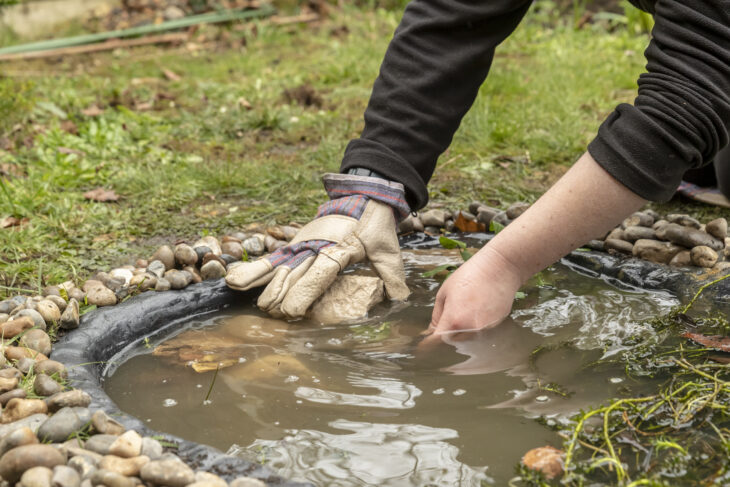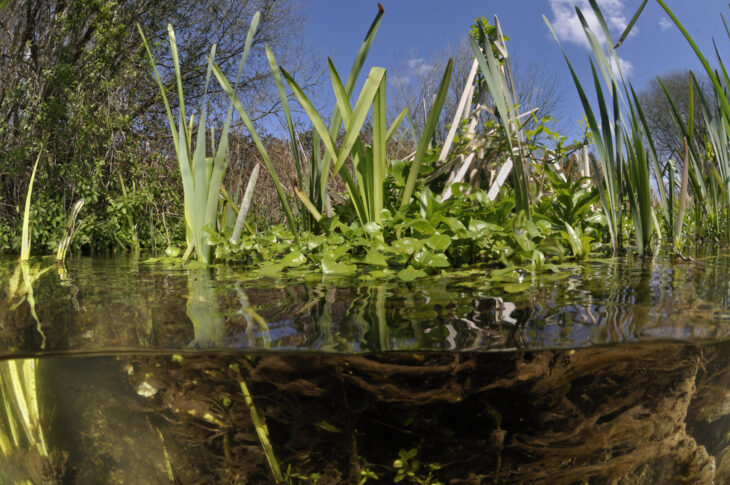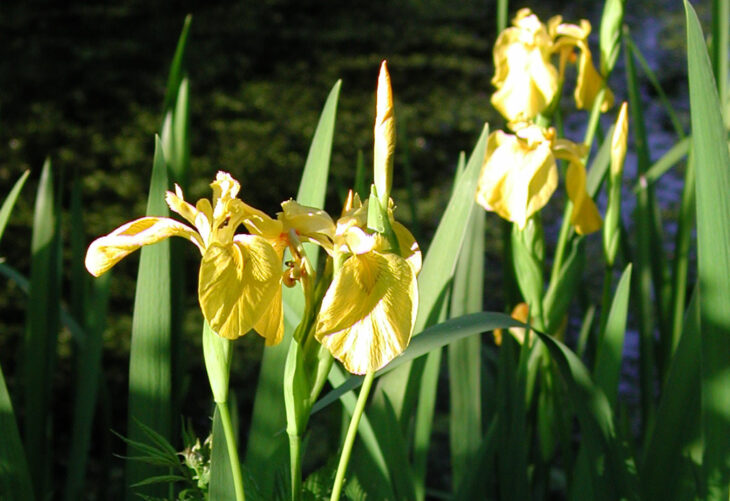In the last century, more than half of all ponds in the UK countryside have been lost. With more than two thirds of freshwater species relying on pond habitats, one of the best things that you can do to add wildlife value to your garden or neighbourhood is to install a wildlife pond.
These freshwater havens can be as big or small as you like and if you don’t have a garden, you could consider contacting the owner of a local green space to see if they would be interested in installing a wildlife pond with you.

What you will need:
- A sheltered spot, ideally partially shaded
- A spade
- A butyl pond liner
- Sand or something else soft (such as an old carpet) to line the hole
- Gravel
- Pond plants (more information below)

How to create your wildlife pond:
Step 1: Siting your pond
The positioning of your pond is key to its success. Too much light and you will risk an algal infestation, but site it underneath an overhanging tree and you will be forever netting leaves out of it in autumn. The ideal location is a sheltered southwest-facing spot which is at least partially shaded. It’s always a good idea to mark out the shape of your pond with rope or a hose pipe before you get the spade out.
Step 2: Constructing your pond
Once you are certain of the location of your pond, it’s time to dig. Ideally, the pond needs to be at least 90cm at its deepest so that your pondlife can escape the ice in winter, but you’ll need to dig around 15cm further down to accommodate the liner and ‘under-cushion’. It’s also a good idea to dig a planting shelf at around 45cm deep to sit your planters on. Finally, dig a trench around the perimeter of the pond for the overhanging pond liner to drop into.
Remove any sharp stones or other objects from the bottom of the hole and then put down 5cm of under-cushioning. This could be sand, old carpet or even newspapers. Next, unroll a butyl liner and line the hole with it, allowing the edges to drop into the trench around the perimeter.

Step 3: Filling your pond
Before filling with water, it’s a good idea to put a 5-10cm deep substrate such as sand or washed gravel into the bottom of your pond. Next, fill the pond with water. Rainwater is by far the best, but if this isn’t practical, you can make do with tap water. Once filled, trim the liner to size, leaving plenty of overlap to fall into the perimeter trench. Finally, backfill the trench with soil and place turf, flagstones or gravel over any exposed liner at the pond edges to avoid it degrading in sunlight.
Step 4: Planting
Plants can be introduced to your pond after it has had time to settle. If you have used tap water to fill the pond, it’s best to leave 2-3 weeks before introducing plants to allow time for tap water nutrients, such as chlorine and fluoride, to evaporate. Next, select your native pond species and plant up!
Wildlife pond plants
There are four ‘zones’ in which pond plants may be grown and it’s best to try to have plants in each zone.
Floating-leaved plants
Floating-leaved plants are good places for the eggs of pond snails, dragonflies and newts. Species include amphibious bistort, bladderwort, frogbit, curled pondweed and water crowfoot.
Submerged aquatic plants
Submerged aquatic plants oxygenate the water and provide cover for pondlife. Species include water starwort, hornwort, horned pondweed and spiked water-milfoil.
Emergent plants
Emergent plants will send their leaves and flowers up above the water’s surface. Species include flowering rush, bog bean, arrowhead and water mint.
Marginal plants
Marginal plants will grow happily around the edge of your pond. Species include water forget-me-knot, yellow iris, marsh marigold, meadowsweet and water pepper.

